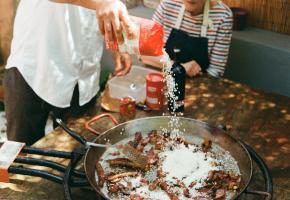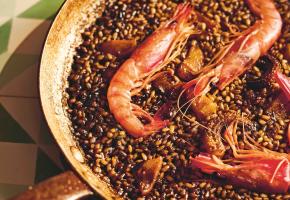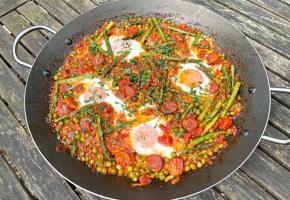1. Iberian ham was consumed by the elite of Roman society and it even went as far as to issue coins in the shape of a ham. Hence the expression: ‘Esto cuesta un jamon!’ - This costs a ham!
2. There are different kinds of ham depending on the breed of pig, their environment, food source and upbringing. That is why the price range for one ham is between 30 (for pigs fed with feed in a pigsty and 700 pounds (for pigs reared in freedom and fed with acorns, herbs and mushrooms). So there is bellota (acorn) ham and Lidl ham - if you know what I mean!
3. It is a myth that Iberian pigs have a “pata negra” (black leg), unless you paint it black of course. However, in reality they do have black hooves but then again, not all. The quality of the ham depends on the breed and the food the pig eats rather than what colour legs or hooves they have!

4. Recently, my flatmate mistook a ham on the ham stand for a turkey and the sister of a friend believed that it was the leg of a horse! There have even been cases of people who have cut a large piece of ham and put it in the boiling pot! Do not boil the ham! Instead hang it at 10-15 degrees Celsius and in a dark environment. Like red wine, it should be consumed at room temperature.
5. The pig (either species or other Iberian) is also called a slob, hog, guzzler, glutton, gannet, sloven, pork, muddy, mucky, slob,etc . Why has it such a bad fame? Generally, animals have sweat gland that regulate body temperature. The pig does not have them, so that their way to control its temperature is by bathing in mud and, when they can, in the water. They are similar to hippos who spend most of their time in the water. So, you know that in reality the bad reputation has a fair and ‘clean’ explanation.
6. The Roman army had within its infantry section a powerful 'Legion of the Pig'. Consular officials wore badges and had crests in the shape of a pig as well as military medals acknowledging acts of military distinction. They say that some soldiers were thrilled to the point of tears when, after being accepted in the Legion by his superior was told, "Congratulations, Pig!".

7. Montanera is the last phase of the raising of Iberian pig (period between October and March when the acorns fall). The pigs forage all day long in a dehesa, which is a forest of cork and oak trees abundant with the acorns, the essential ingredient in the pigs diet together with herbs and wild mushrooms.
At this beginning of this stage the animals weigh approximately 90kg and can reach 160 kg in a good harvest of acorns by the end. This is the happiest period of the pig life as it forages in complete freedom. In Spain it is still said, "Live like a king or a pig in the dehesa".
8. An Iberian pig will walk around 14 km daily foraging in the dehesa. But not all cover the same distance, since there are those who are more or less active (and some are more lazy than others). Hence, believe it or not, the taste of ham depends on their activity.
9. The fats of Iberian pig of acorn have more than 55% monounsaturated oleic acid, which is the same found in olive oil and avocado. This increases the rate of good cholesterol, beneficial to us and reduces the rate of bad cholesterol. The reason is mainly due to the pigs’ diet in the dehesa: 8kg of acorns and about 3kg of herbs and daily mushrooms!
10. The Iberian acorn pig represents 1 per cent of all pigs in the world. The most current expensive jamón comes from a breed between an English white male pig and a female pig from Huelva in Spain, and now costs 4100 EUR. Could it be that we will come back to the time of the Romans and mint currencies in the form of ham?
You can get Spanish ham from http://www.elcarrito.co.uk

















